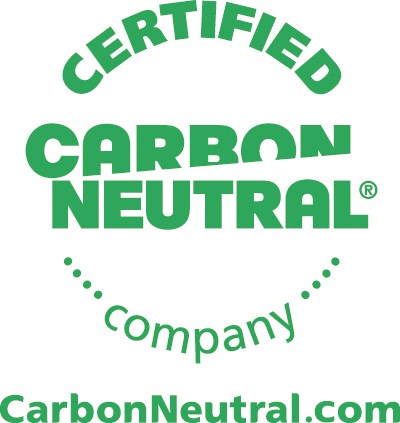Carbon Neutral Reporting

Carbon Neutral Reporting?
Carbon neutral reporting is a process through which organizations measure, document, and communicate their greenhouse gas (GHG) emissions, with the ultimate goal of achieving carbon neutrality. Carbon neutrality, also known as a net-zero carbon footprint, is attained when an organization balances the amount of greenhouse gases it emits with an equivalent amount of emissions removed from the atmosphere or offset through various initiatives.
Key Components of Carbon Neutral Reporting include:
1. Emissions Inventory: Organizations conduct a thorough assessment of their direct (Scope 1), indirect (Scope 2), and sometimes value chain-related (Scope 3) greenhouse gas emissions. This inventory includes emissions from activities such as energy consumption, transportation, and production processes.
2. Setting Reduction Targets: Establishing specific and measurable targets to reduce greenhouse gas emissions. These targets are often aligned with global efforts to limit climate change, and they guide the organization in its journey towards carbon neutrality.
3. Renewable Energy and Efficiency Measures: Implementing strategies to reduce emissions, such as transitioning to renewable energy sources (like solar or wind power) and enhancing energy efficiency within operations.
4. Carbon Offsetting: Compensating for unavoidable emissions by investing in projects that either remove greenhouse gases from the atmosphere or prevent their release. Common offset projects include reforestation, renewable energy initiatives, and methane capture projects.
5. Reporting and Transparency: Communicating the organization’s carbon footprint, reduction targets, and progress through reports or other forms of disclosure. This transparency enhances accountability and allows stakeholders to assess the company’s commitment to sustainability.
6. Verification: Some organizations undergo third-party verification of their carbon neutral claims. This independent assessment adds credibility to the reported information and assures stakeholders that the organization is meeting its stated goals.
7. Continuous Improvement: Carbon neutral reporting is not a one-time activity but a continuous process. Organizations regularly review and update their strategies based on changing circumstances, technological advancements, and the latest best practices.
The overall aim of carbon neutral reporting is to contribute to global efforts in mitigating climate change. As concerns about environmental sustainability grow, more companies are adopting carbon-neutral reporting as part of their broader commitment to corporate social responsibility and environmental stewardship.
Benefits of Carbon Neutral Reporting
Environmental Responsibility
Carbon neutral certification demonstrates a strong commitment to environmental responsibility and sustainability. By achieving carbon neutrality, entities actively contribute to mitigating climate change and reducing greenhouse gas emissions, playing a crucial role in protecting the planet for future generations.
Enhanced Reputation
Holding a carbon-neutral certification can significantly enhance an entity's reputation. It showcases a proactive approach to addressing climate change and positions the entity as an industry leader in sustainability.
Competitive Advantage
In an increasingly environmentally aware market, carbon-neutral certification provides a competitive advantage. Consumers are increasingly seeking eco-friendly products and services, and a certification demonstrating carbon neutrality can differentiate an entity from its competitors.
Stakeholder Engagement
Carbon neutral certification can foster stronger engagement with stakeholders, including employees, shareholders, and the local community. It showcases a commitment to sustainable practices and can generate pride and loyalty among employees.
Risk Mitigation
Achieving carbon neutrality can help mitigate risks associated with climate change. By proactively reducing greenhouse gas emissions and investing in carbon offset projects, entities are better prepared for potential regulatory changes, carbon pricing mechanisms, or other market-based mechanisms aimed at reducing emissions.
Global Collaboration
Carbon neutral certification aligns with international climate change goals and encourages global collaboration. By participating in carbon neutrality initiatives, entities contribute to broader efforts to limit global warming, such as the targets outlined in the Paris Agreement.
Carbon Neutral Challenges
Data Accuracy and Availability:
- Obtaining accurate and reliable data for measuring greenhouse gas emissions is a significant challenge, especially within intricate supply chains.
Scope 3 Emissions Complexity:
- Calculating and reporting Scope 3 emissions, which involve indirect emissions from the value chain, adds complexity to the reporting process.
Dynamic Emission Factors:
- The dynamic nature of emission factors, subject to scientific updates, requires constant vigilance to maintain precision in reporting methodologies.
Third-Party Verification:
- Achieving third-party verification, crucial for credibility, is resource-intensive and can have financial implications for organizations.
Absence of Standardized Global Regulations:
- The lack of standardized global regulations for carbon reporting introduces uncertainty, necessitating continuous adaptation to varying reporting requirements.
Methodological Standardization Gap:
- The absence of methodological standardization complicates cross-industry and cross-regional comparisons, making benchmarking challenging.
Technological Implementation Challenges:
- Implementing efficient data collection and reporting systems poses technological challenges that organizations need to address.
Employee Engagement and Awareness:
- Ensuring employee engagement and awareness about sustainability goals is crucial but can be a multifaceted challenge.
Balancing Short-Term and Long-Term Goals:
- Striking a balance between short-term financial priorities and long-term sustainability goals remains a persistent challenge for organizations committed to carbon neutrality.
Concerted Effort and Technological Investments:
- Successfully navigating these challenges requires a concerted effort from organizations, including substantial technological investments.
Commitment to Transparent Reporting:
- A commitment to transparent and authentic reporting is essential for organizations aiming to navigate the complexities of carbon-neutral reporting successfully.
Who can get Carbon Neutral certification?
Carbon Neutral status can be achieved by any organization, product, brand or event that can demonstrate that there has been no increase in GHG emissions through the purchase of quantified and verified carbon offsets.
Here is a list of entities that can pursue carbon neutral certification:
- Businesses and Corporations
- Nonprofit Organizations
- Government Agencies
- Educational Institutions
- Hospitals and Healthcare Facilities
- Hotels and Hospitality Industry
- Event Organizers and Conferences
- Product Manufacturers
- Retailers and E-commerce Companies
- Energy Providers and Utilities
- Transportation and Logistics Companies
- Construction and Real Estate Companies
- Agricultural and Farming Operations
- Food and Beverage Industry
- Technology Companies
- Professional Service Providers (Consulting, Accounting, Legal, etc.)
- Entertainment and Media Companies
- Sports Organizations and Facilities
- Travel and Tourism Industry
- Individuals (for personal carbon neutrality efforts)
